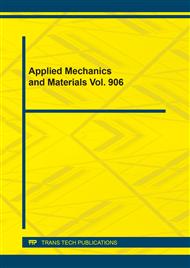p.1
p.23
p.33
p.41
p.59
p.67
p.75
p.81
p.87
Design and Optimization of the Pedestal Structure for the Sealed Cabin Used in Capsized Vessels Rescuing
Abstract:
The bottom hole opening method is generally used to rescue the people trapped inside the capsized vessels. In this paper, a new sealed cabin with flexible cabin shell and rigid pedestal was proposed to rescue people in distress through the inner hole cut on the bottom hull. The parameters of the cabin pedestal and the sealed pedestal are optimized respectively to reduce the weight of the whole cabin. According to response surface methodology to analysis the relationship between the tress and the structural parameters. The maximum equivalent stress and maximum deformation are the constraint conditions and the total mass of the structure is the objective function, and the multi-island genetic algorithm is used to optimize the model, and the approximate optimal solution was finally obtained. The results show that the strength of cabin pedestal and sealing pedestal meet the application requirements.
Info:
Periodical:
Pages:
33-40
Citation:
Online since:
April 2022
Authors:
Price:
Сopyright:
© 2022 Trans Tech Publications Ltd. All Rights Reserved
Share:
Citation:


